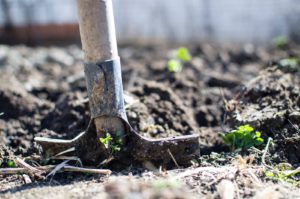Farming presents unique challenges when it comes to health and safety requirements. Working around heavy machinery, equipment, chemicals and animals presents different hazards. According to the Canadian Agricultural Injury Reporting (CAIR), the average number of agriculture-related fatalities was 85 per year from 2002-2012. Although this is a decline from the previous years of reporting, it’s still far higher than any industry would like to see.
Unfortunately for farmers, death and injury of an employee often results in some sort of legal action (either regulatory, civil or criminal), as well as economic loss (fees associated with compensating for the accident), commodity loss (the inability for the employee to continue working may impact the farm operations) and a human resource loss (there is a limited pool of farm employees). Not to mention the devastating emotional toll it can take on the farmer, the family and other co-workers.
As a farm owner, you are ultimately responsible for the health and safety of everyone in a business. The goal of a good health and safety plan is to ensure everyone working on or visiting the farm is involved in protecting themselves and others from injury or illness.
In this article, we will outline how to develop a farm safety plan that will help provide you and your employees with peace of mind on the job.
Creating a Farm Health and Safety Plan
In addition to providing peace of mind, a farm safety plan will help a farmer meet his or her due diligence requirements as an employer. To do so, the plan should be detailed, adequate for the type of farm and its hazards, monitored regularly and evaluated. All employees must be required to read and sign the safety policy as part of their employment.
As a general guideline, the plan must meet the requirements set out in the Occupational Health and Safety Act as well as the Guide to the Occupational Health and Safety Act for Farming Operations. The Ontario Ministry of Labour recommends the following key elements to include in the plan:
A) Overall Policy Statement
Develop and communicate a policy on your farm’s health and safety philosophy and objectives, making it clear that substandard health and safety performance will not be accepted and that employees must abide by the plan. Affirm your commitment to preventing occupational injuries and illnesses, listing everyone who’s accountable for upholding the plan. The overall policy statement is also an area where you should highlight operational procedures such as:
- Training requirements and records
- Emergency plans
- First aid records
- Working alone procedures
- Incident investigation processes and follow-ups
- Responsibilities of all persons working on the operation, including contractors
B) Identify Hazards
This section of your plan will be unique to the type of farm that you operate, i.e. a chicken farm may have different hazards than a grain farm. No matter which type of farm you operate, all hazards must be considered and employees need to be aware of how to work effectively with or around them. The Ontario FarmSafe guide outlines an exhaustive list of hazards to consider including:
- Chemical hazards – such as solvents, pesticides, welding fumes and fuel vapours
- Biological hazards or bio-hazards – such as bacteria, viruses, dust, molds, animal-borne diseases
- Workplace stress – caused by long work periods, work demands, physical or psychological harassment. Bear in mind that the Occupational Health and Safety Act outlines workplace violence and workplace harassment provisions, which are the same for workplace parties on a farming operation as they are for other workplaces.
- Confined spaces – asphyxiation or poisoning from gases in manure storage pits, grain bins, septic tanks and other confined spaces; drowning in tanks, wells and cisterns
- Biological – grain and feed dust, infected animals and veterinary supplies
- Physical conditions with potential harm – electrical currents, heat, light, mechanical movement, vibration, pressurized liquids, noise, livestock, radiation (welder’s flash)
- Noise – loss of hearing from sustained exposure to farm equipment, livestock and maintenance processes
- Machines – most frequently involved in farm deaths and serious injury, including:
- Transporting workers (rollover, run over after falling,) on tractors, trucks, all-terrain vehicles, other farm equipment
- Starting equipment/fuelling up (bystander/operator run over, explosion)
- Using PTO (Power Take Off) driven implements (entanglement)
- Using farm equipment on public roadways (rollover, collision)
- Using machinery around power lines (electrocution)
- Using loaders (electrocution, entanglement, crushing, falls)
- Working with animals – injuries from large, irritable, protective or aggressive animals
- Extreme terrain and weather – a result of extreme temperatures or dangerous terrain
- Working alone or in isolated places – delayed or increased response time in an emergency
- Ergonomic – poor posture or work position, repetitive motion, such as lifting, moving, repositioning heavy loads or machinery
C) Control Strategies
Now that you’ve outlined the policy and hazards clearly, it’s time to think about how you will control and manage them. First, and most importantly, is to train your employees on safe operating procedures, and that includes casual workers and family members who help. The training should include:
- How to perform each task safely
- How to correctly use and maintain personal protective equipment and systems
- Hazard identification and control procedures
- Rights and responsibilities of workers
- How to introduce and talk about concerns and who to ask for help
- Where to go for first aid
- What to do in case of an emergency
- What to do if there’s an incident
Secondly, as a farmer you are responsible for knowing how everything in your farm operates and inspecting it regularly. During your inspections, keep a list of necessary jobs or tasks and consider the hazards in each step. Once you’ve done this, you can develop standard operating practices (SOPs) for each task and incorporate health and safety practices into all work activities. SOPs then become your training tool for current and new employees.
Third, be sure to work in emergency preparedness to your SOPs. A quick and structured response in an emergency can lessen the impact of an injury and may even save a life. Several organizations offer emergency response and first aid courses. Contact your regional health office or your local fire department to find out about courses in your area.
Fourth, build in regular and scheduled reviews of your SOPs, which should include inspection of machines, chemicals and other hazards within your farm to ensure everything is working properly.
Finally, as a general guideline, it’s good practice to monitor the overall wellness of your employees. If you see someone struggling or unwell, take action quickly so it doesn’t progress into something worse. If you notice unsafe behaviour, or hear of it happening through someone else, address it right away.
Create Your Farm Safety Plan with a Lerners Agricultural Lawyer
As a farmer, you are operating a business with employees, and that makes you responsible for their health and safety as outlined under Ontario employment laws. At Lerners LLP, our Agricultural Law Group can help clients with all aspects of agricultural law, including the development of health and safety plans and policies for farm operations.
For more information, please contact us at: 519-672-4510.
References:









